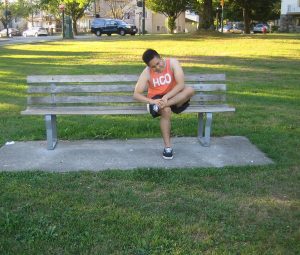A compartment syndrome develops once the muscles become significantly swollen for the bordering sheath and can be categorized as acute or chronic.
The lateral compartment is comprised of the peroneus longus and the brevis muscles. The acute form is one that arises abruptly while the chronic form generally develops in a steady manner over time.
Acute compartment syndrome
The acute form can develop after an impact or injury which results to bleeding and swelling inside the muscle sheath.
The surplus fluid places significant pressure inside the muscle sheath. The signs typically include discomfort at the rear part of the leg particularly while walking or running along with swelling or tenderness in the muscle on the external part of the calf.

What must be done?
If there is significant pain, seek medical attention. An acute compartment syndrome can be considered as a medical emergency due to the possibility for nerve and muscle damage.
The individual must rest until the pain has settled. The upper body must be worked out instead or stick with swimming if can be done without triggering pain.
Apply an ice pack for 20 minutes every 2 hours. A compression support can also be used to lessen the swelling and provide support to the muscle.
Professional treatment
When a professional therapist is consulted, a compartment pressure test is done to confirm a diagnosis. Ultrasound or other electrotherapy techniques are utilized to lessen the swelling.
The doctor might prescribe an anti-inflammatory drug to reduce the pain and inflammation. In severe instances, a surgeon might perform a surgical procedure to decompress the compartment.
